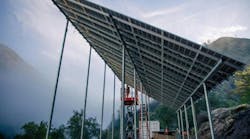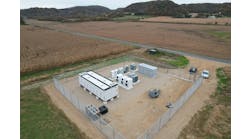When it comes to planning microgrids and distributed energy resources (DER) in communities, stakeholders focused on issues such as finance, operations, sustainability and environmental justice often bring strong emotions to the table, said Gareth Evans, founder and CEO of Veckta, an energy marketplace and software platform that aims to cut the time and costs of deploying DERs.
A project to bring three microgrids to several Alaska communities aims to remove the emotion and make it easier to make decisions that benefit all stakeholders, he said. Along the way, the goal is to reduce diesel emissions in Alaskan communities dependent on diesel.
High energy costs and consumption plague Alaskan communities
Alaska is among the top five states in terms of both energy costs and per-capita energy consumption, said Matt Nejati, principal of deployment for Launch Alaska, a climate tech deployment accelerator.
More than 200 remote and rural communities operate independent microgrids, largely fueled by diesel, and the cost of purchasing, shipping and storing diesel yields high electricity costs.
The size and remoteness of these villages also make it challenging to deploy clean energy projects, he said.
Given these challenges, different stakeholders have their own thoughts and emotions about projects, Evans said. For example, stakeholders in an organization’s operations care mostly about keeping the power on and meeting production targets, while those in sustainability are concerned about emissions.
The Veckta platform is designed to ensure all stakeholders obtain information in terms they understand. “Ultimately, we create one consolidated business opportunity that can speak in all their languages,” said Evans.
Data designed to calm and inform
To address the stakeholders’ different feelings and expectations, the Veckta platform provides data, based on an analytics tool from the National Renewable Energy Laboratory, to identify the best opportunities for reducing emissions and costs and increasing resilience. After identifying opportunities, the platform provides bids from developers and others for financing, owning and operating projects.
Attracting bidders is expected to lower the costs of projects. Using Veckta’s platform, one commercial customer in California that was paying Pacific Gas & Electric 25 cents/kWh was approached by a solar company that offered 15 cents/kWh for energy, Evans said. The platform’s marketplace identified nine different suppliers who offered costs between 7.5 cents/kWh and 10 cents/kWh for energy.
Attracting $10 million in private financing for microgrids
For the Alaska project, Veckta will work with Launch Alaska, which in 2022 received $3.4 million in funding from the federal Department of Energy under the Energyshed program, which funds efforts that help deploy local energy projects. Partnering with Veckta, Launch Alaska plans to attract $10 million in private financing for three microgrid projects in rural communities.
This isn’t the first effort to equip small and rural Alaska communities with renewable microgrids. The Port of Alaska, Homer Electric and others are developing new microgrids or upgrading existing fossil-fueled microgrids with renewables and storage.
Here’s how the Veckta platform works: The project participants will evaluate 12 Alaska communities – six in northern Alaska and six in southern Alaska – to identify microgrid opportunities.
Community members will then log into the Veckta platform to learn details about possible projects, including how much energy the community consumes and how the energy is generated – usually by diesel. Additional data will include utility tariffs, numbers of outages and solar resources. Community members will also gain from the platform real-time intelligence about tax incentives and the cost of different resource options.
The platform will present to stakeholders various resource options, including solar, batteries and hydroelectricity, along with the costs and benefits of each option. Community members can then discuss the options, based on the data – not emotions, Evans said. Collectively, the stakeholders will identify a minimum of three projects that will be financed and built.
Reviewing options to decide whether to proceed or kill projects
“With the data, we can provide a huge amount of intelligence that helps decide which projects to watch, proceed or kill,” Evans said.
This is the first time the Veckta platform is being used for communities, as opposed to commercial and industrial utility customers, he noted.
“This is a fairly new market,” Evans said. “We don’t want people to feel like they are taking risks. We give them the data and intelligences specific to their needs and objectives to build confidence.”
Bidders compete for projects, lowering costs
Once the platform prioritizes a site, the proposed project is posted in Veckta’s project marketplace to attract finance, construction and operation partners. The players in the marketplace include developers with capital, equipment providers, energy-as-a-service providers and others who bid and compete for projects.
Most likely, the communities will choose third parties to build, finance, own and operate the microgrids because they don’t want the burden of owning and operating a project, Evans said.
Launch Alaska’s Nejati said that the partnership with Veckta will allow for aggregation of projects, which will leverage common resources for all stakeholders. This is expected to remove some of the barriers to deploying clean energy projects in small communities.
Attracting private capital
Launch Alaska is also focused on bringing in private capital to help fund these projects.
“Private investment is not typically flowing into clean energy projects in rural Alaska, largely because the small project sizes and challenging deployment landscape result in a higher-per-unit deployment cost and that they tend to require capital investments that are too small for the typical renewable energy investor,” Nejati said.
The Veckta platform, which provides information in a single place, is expected to improve the ease and speed of project development while ensuring community voices are heard in the decision making, he added.
And hopefully, those voices won’t be overrun by emotion.
“The fun part is helping people make informed decisions that aren’t driven by emotion,” said Evans.








